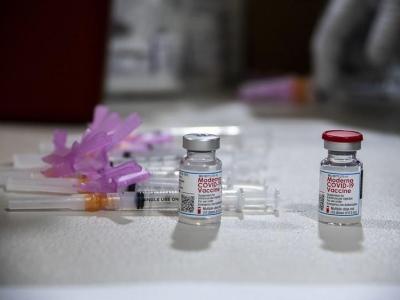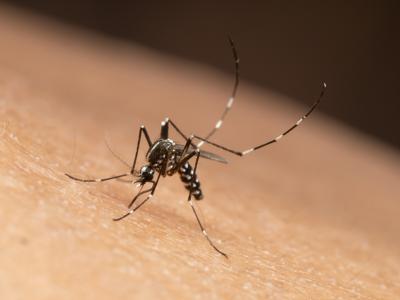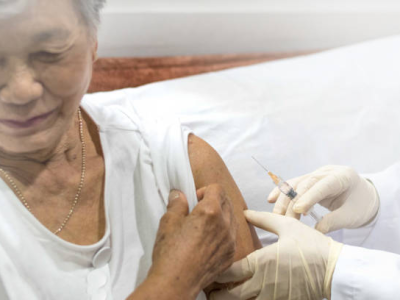CDC dragged its feet on lab mishap reporting policy, USA Today says
The Centers for Disease Control and Prevention (CDC) waited until last week to set a policy to centralize reporting of all lab mishaps within the agency despite previous high-profile lab accidents and promises of change, according to a USA Today story yesterday.
It was on Jul 20 that the CDC issued an updated policy requiring that lab accidents be reported to the agency's top safety office, according to records the agency provided to the newspaper yesterday, the story said.
That information was contrary to what the CDC had told USA Today earlier this month, the story asserted. In a written statement provided for a Jul 9 story about recent CDC lab accidents and "near misses," the agency said it already had a policy on centralized reporting in place.
"The agency said it made a mistake in the information it previously provided to the newspaper on July 8," the story related. "The agency said its updated incident reporting policy was under development at the time USA TODAY asked its questions but wasn't finalized."
The CDC pledged to strengthen lab safety after two lapses last year, involving the inadvertent transfers of samples of live B anthracis, which causes anthrax, and H5N1 influenza virus from CDC labs to, respectively, a lower-containment CDC lab and an external lab. Last summer the agency announced it would set up an external advisory group on lab safety and assign oversight of lab safety to one person, among other steps.
The external review committee reported earlier this year that the CDC's commitment to lab safety was weak and that many lab workers were afraid to report lapses.
USA Today said the latest documents it obtained show that the CDC's acting top lab safety official emphasized in a memo last week the importance of reporting all lab safety incidents and near misses.
Jul 27 USA Today story
Mar 20 CIDRAP News story "Review panel finds CDC weak on lab safety"
Cyclospora illness pattern, farm probes spur FDA cilantro alert
The US Food and Drug Administration (FDA) yesterday issued an import alert about cilantro from Puebla, Mexico, that has been associated with clusters of Cyclospora infections each summer since 2012, including an outbreak this summer in Texas and a restaurant cluster in Wisconsin.
The Texas outbreak has now sickened 210 people, most of them from the Austin and Dallas areas.
Federal and state investigations have linked some of the 2013 and 2014 Cyclospora infections to cilantro from Puebla, and a review of a 2012 cluster in Texas also suggested that cilantro from the region was one potential source of the parasite, which can cause prolonged watery diarrhea.
The source of the 2015 outbreaks in Texas and Wisconsin are still under investigation, the FDA said. The agency added, however, that because of the recurring nature of the Cyclospora infections, it's extremely unlikely that the cyclosporiasis cases are due to isolated contamination events.
So far no single supplier or lot can explain all of the illnesses, and the FDA believes the Cyclospora source probably reflects a broader contamination source, such as fecal contamination in growing areas or irrigation of fields with sewage-tainted water.
Investigation of 11 cilantro farms in the Puebla growing region by the FDA and its Mexican food safety counterparts from 2013 to 2015 included five that were linked to US illnesses.
The inspectors found objectionable conditions at eight farms, including the five linked to US infections. For example, human feces and toilet paper were found in some of the fields, and the pathogen was found in water from a holding tank used for employee hand washing.
Based on the findings, the FDA said the cilantro imported from Puebla appears to be adulterated according to import regulations, and the seasonality of the infections warrants detaining cilantro from the area from Apr 1 through Aug 31 of each year.
Jul 27 FDA alert
Jul 28 Texas Department of State Health Services update
Survey finds low awareness of hepatitis B vaccine, low testing rate
A new poll shows that less than half of Americans know there is a vaccine for hepatitis B, even though about 12 million people have had the infection, the Hepatitis B Foundation reported in connection with World Hepatitis Day, observed today.
The poll, by REPASS Research and Strategic Consulting, Cincinnati, found that 39% of respondents were not sure if a hepatitis B vaccine was available, and 17% believed there was none, the foundation said. The vaccine has been available since 1981.
Also of concern was that 54% of respondents had not been tested for hepatitis B, a virus that may cause no symptoms, permitting a person to spread it unknowingly, the foundation said. Twenty-nine percent said they had been tested, and 17% were not sure. The poll involved a balanced sample of 1,500 Americans, the group reported.
Jul 27 Hepatitis B Foundation news release
In related news, the World Health Organization (WHO) spoke of the urgent need for countries to enhance action to prevent viral hepatitis and to ensure that people who have been infected are diagnosed and offered treatment.
In a Jul 23 statement, the WHO said that hepatitis B and C together cause about 80% of all liver cancer deaths and kill close to 1.4 million people every year. The agency noted that it recommends vaccinating all children against hepatitis B and also vaccinating at-risk adults, such as dialysis patients, healthcare workers, and people who inject drugs.
In September the first World Hepatitis Summit will be held in Glasgow, Scotland, giving countries the opportunity to share best practices, the WHO noted.
Jul 23 WHO news release
In Europe, about 50,000 new cases of hepatitis B and C are reported annually, the European Centre for Disease Prevention and Control (ECDC) said yesterday. The agency said an estimated 10 million Europeans are chronically infected with either virus, but most don't know it.
The ECDC also noted that Europe has had several hepatitis A outbreaks involving foodborne transmission in recent years, including three large events in 2013 and 2014 that were associated with fresh or frozen berries.
Jul 27 ECDC news release
Global agencies urge for more meningitis vaccine for Africa
With thousands of cases of meningitis C in West Africa so far this year, an acute shortage of vaccine containing the "C" strain threatens to lead to a major public health crisis, the WHO and three other agencies said today.
The International Coordinating Group for Vaccine Provision for Epidemic Meningitis Control (ICG) called on vaccine manufacturers to increase production of the C-containing vaccine by 5 million doses before the 2016 meningitis season starts in January, according to a WHO press release. The ICS comprises the WHO, Doctors without Borders (MSF), the International Federation of Red Cross and Red Crescent Societies, and the United Nations Children's Fund (UNICEF).
"Cases of meningitis C have been rising since 2013, first in Nigeria in 2013 and 2014, and then in Niger in 2015. We have to be ready for a much larger number of cases during the 2016 meningitis season," said William Perea, MD, MPH, of the WHO.
"We have had preliminary discussions with vaccine manufacturers and impressed upon them the need to produce a stockpile of 5 million doses of vaccine so as to be ready for flare-ups of the disease next year in Africa, but so far they haven't yet revised their production plans to meet demand," said Imran Mirza, MBBS, with UNICEF.
In the first 6 months of 2015, there have been 12,000 cases of meningitis C and 800 deaths in Niger and Nigeria, said MSF's Myriam Henkens, MD, MPH.
Jul 28 WHO news release
Study finds favorable response to 6-strain vaccine in infants
A liquid hexavalent vaccine directed toward six diseases produced a good immune response and few side effects in infants, according to a study yesterday in Pediatrics.
Researchers from three states and the two manufacturers of the vaccine—Merck and Sanofi Pasteur—studied more than 1,400 children in the phase 3 trial. The vaccine, DTaP5-IPV-Hib-HepB, covers diphtheria, tetanus, pertussis (whooping cough), polio, Haemophilus influenzae type b, and hepatitis B.
The team placed 981 infants in group 1; they received the hexavalent vaccine plus a 13-strain pneumococcal vaccine (PCV-13) and a five-strain rotavirus vaccine (RV-5) at 2, 4, and 6 months of age followed by DTaP5, a Hib vaccine called Hib-OMP, and PCV-13 at 15 months of age.
Group 2 comprised 484 infants who received the same regimen, except Hib-OMP was replaced by a different Hib vaccine, called Hib-TT, at the 15-month vaccination. Both groups had adequate immune responses and safety profiles.
The authors conclude, "DTaP5-IPV-Hib-HepB provides a new combination vaccine option aligned with the recommended US infant immunization schedule."
Jul 27 Pediatrics abstract












